Death Valley National Park was not a high priority on my bucket list of places to see because I imagined vast salt flats, sand dunes and barren desert that seemed somewhat boring. Instead, what I saw surprised me. I realized my preconceived ideas of it were very wrong. It is actually a beautiful and fascinating place to visit.

After our drive into the park and viewing the visitors’ center, our first stop was to see the salt flats at Badwater Basin. It was very windy that day and the dust blew across our pathway as we drove 17 miles south from the visitors’ center. It was so windy that sometimes a gust of wind would knock me off balance.

Badwater Basin is the lowest point in North America at 282 feet below sea level. There is no outlet for the rainfall and runoff from the mountains. Part of the basin had water in it when we were there due to recent record rainfalls in California.

Near the parking lot were some pools which are spring fed. The water is very salty, from which it gets its name, “Badwater Basin.” Surprisingly, the pools support some unique animal and plant life.
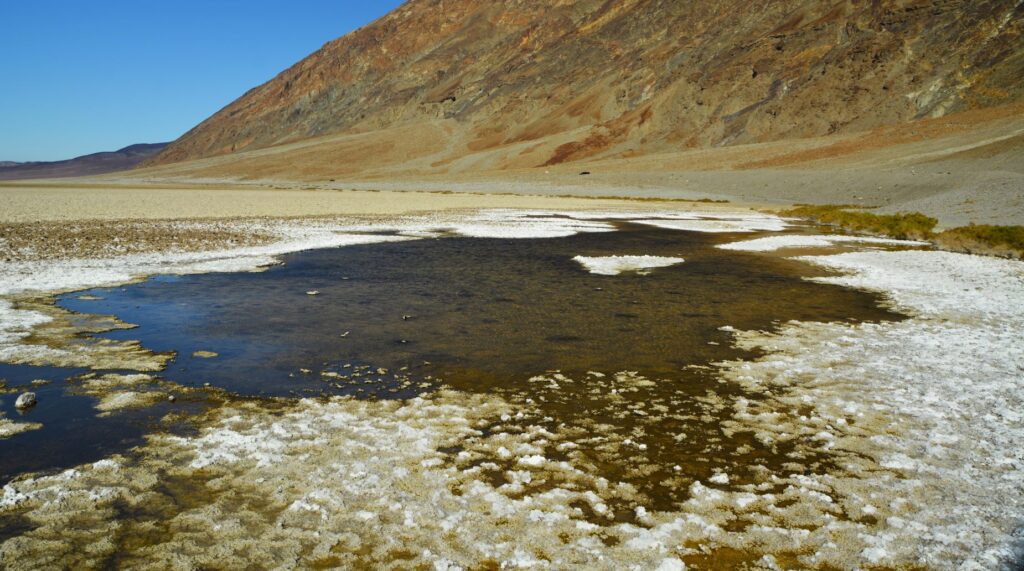
As I walked out toward the salt flats, I looked back at the mountain where I could barely make out the sign that says “Sea Level.”
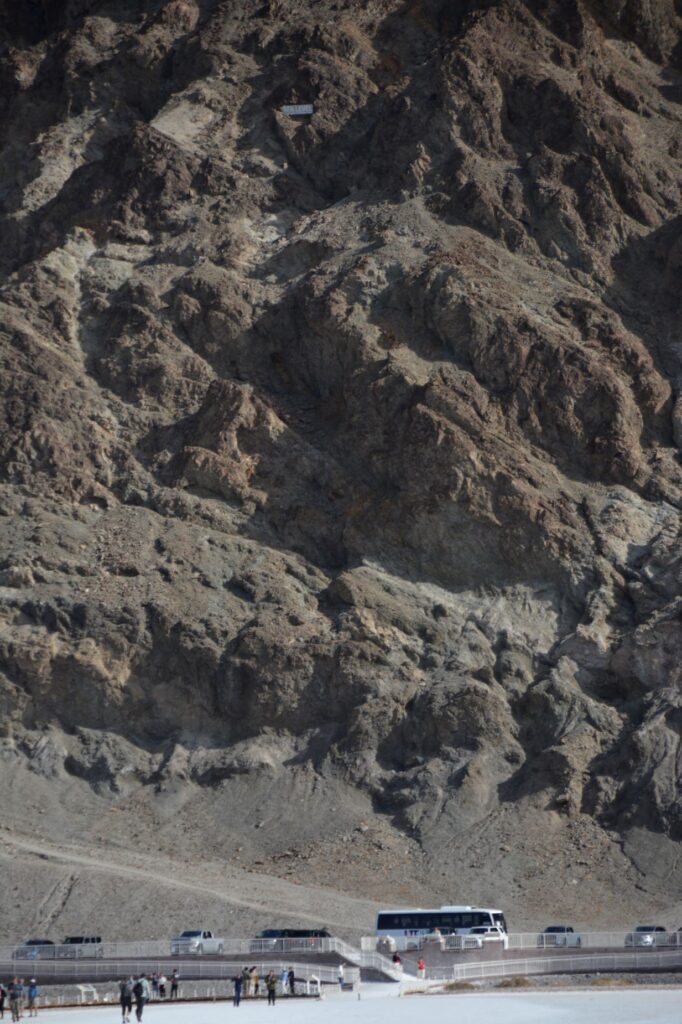
This is what it looks like about a quarter of a mile out on the salt flat. The sun shining on the white salt blinded me. The salt crystals were trampled down from the tourists. This is what I expected Death Valley to look like. But there was much more to see that was surprisingly beautiful.

Heading back toward the visitors’ center, we began to see colorful rocks and mountains which were the result of volcanic deposits, chemical weathering, and oxidation of the exposed minerals. The deep reds, pinks and yellows were created by iron compounds.
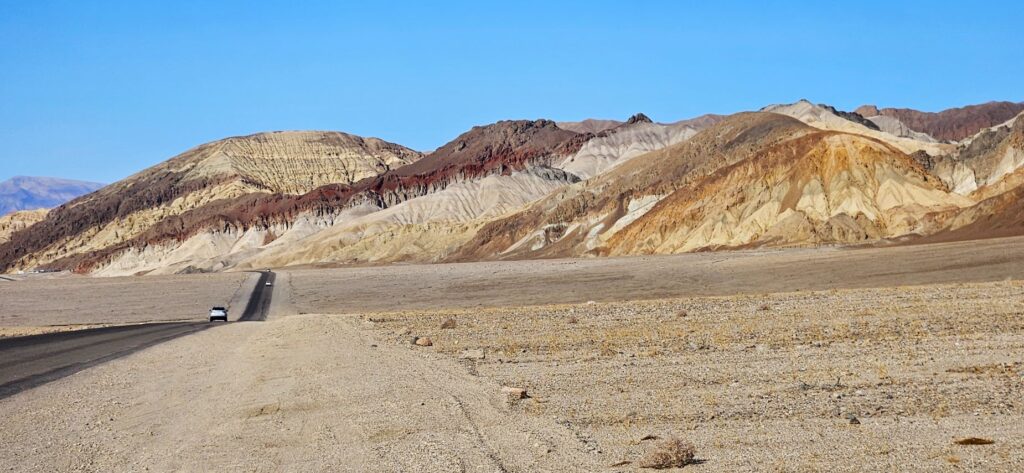
We drove a nine mile drive called “Artists Drive” to see “Artists Palette.” These colorful hills are made from volcanic ash, gravel and playa deposits which contain iron oxides and chlorite.
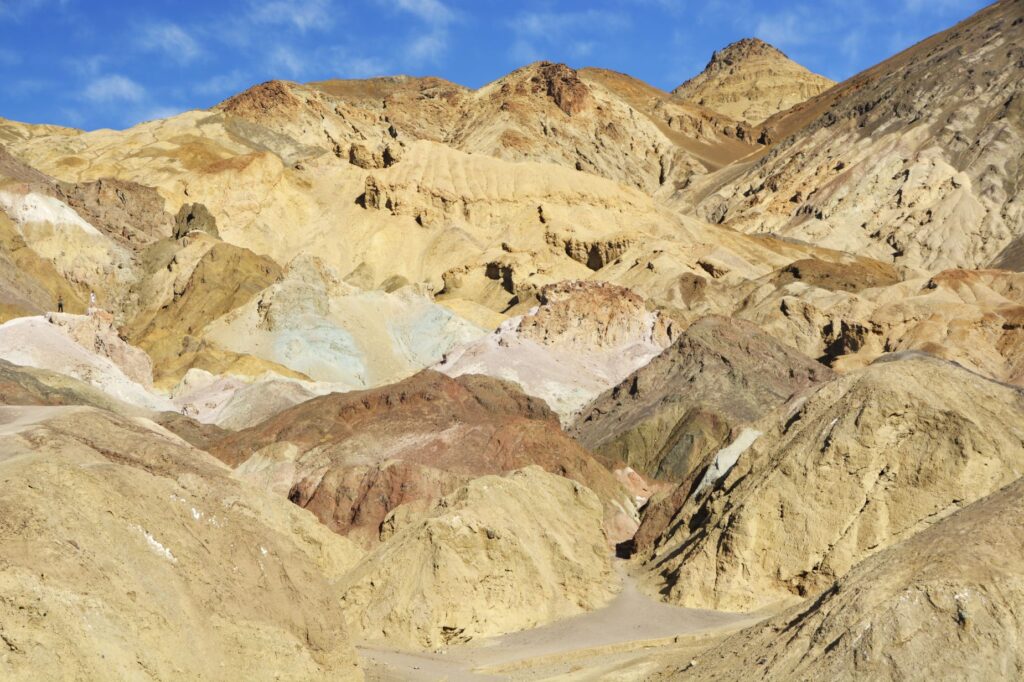
Rainfall, heat and flash flooding eroded the deposits of iron, manganese and mica which, when exposed, were oxidized by the air. This causes the colors of red, pink, yellow, green and purple.
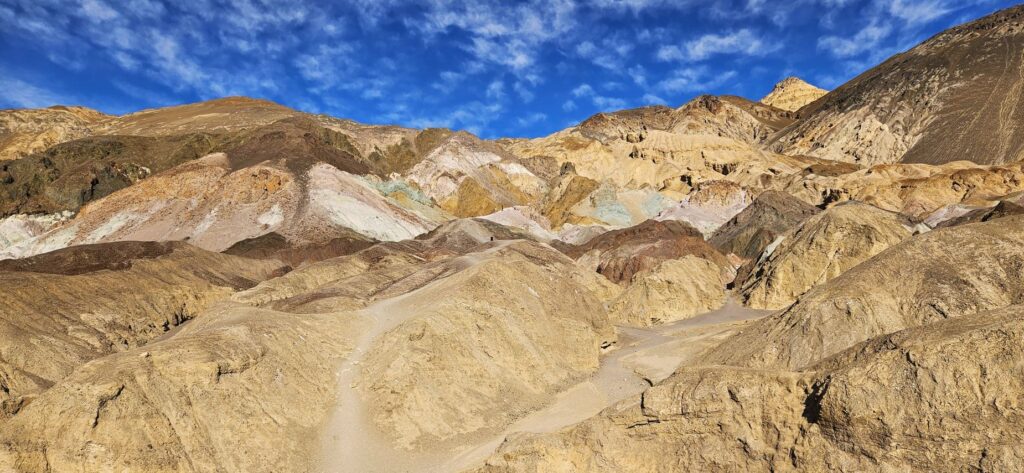
The green rocks are from decomposed mica, not copper, as I originally thought. The purple is created by manganese.
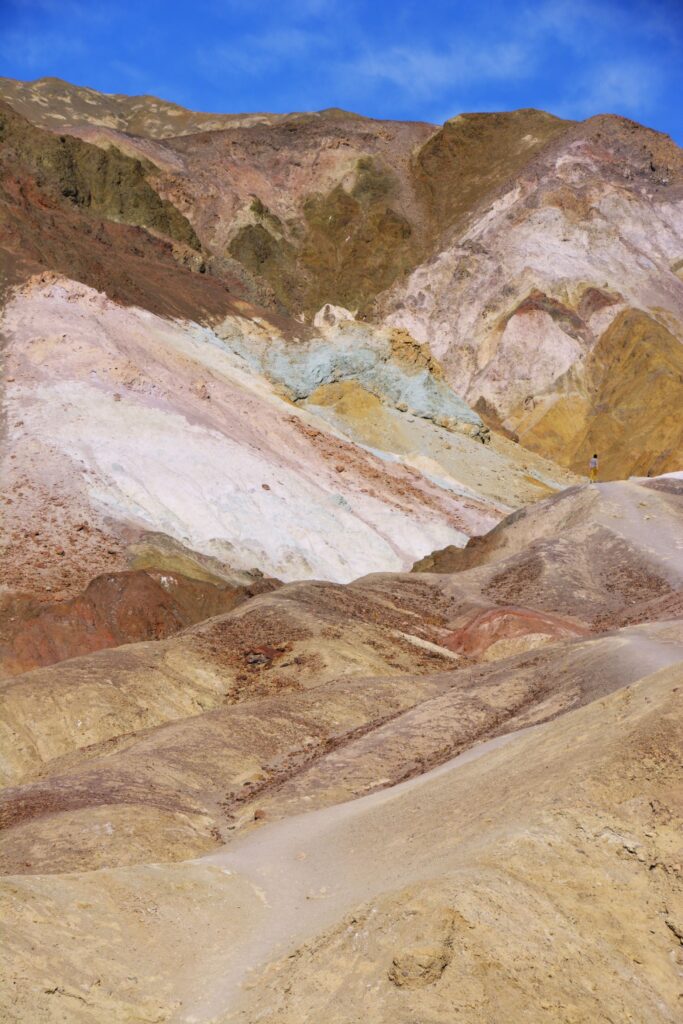
The colorful rocks and mountains were some of the first surprisingly beautiful discoveries in Death Valley. There was much more to come.
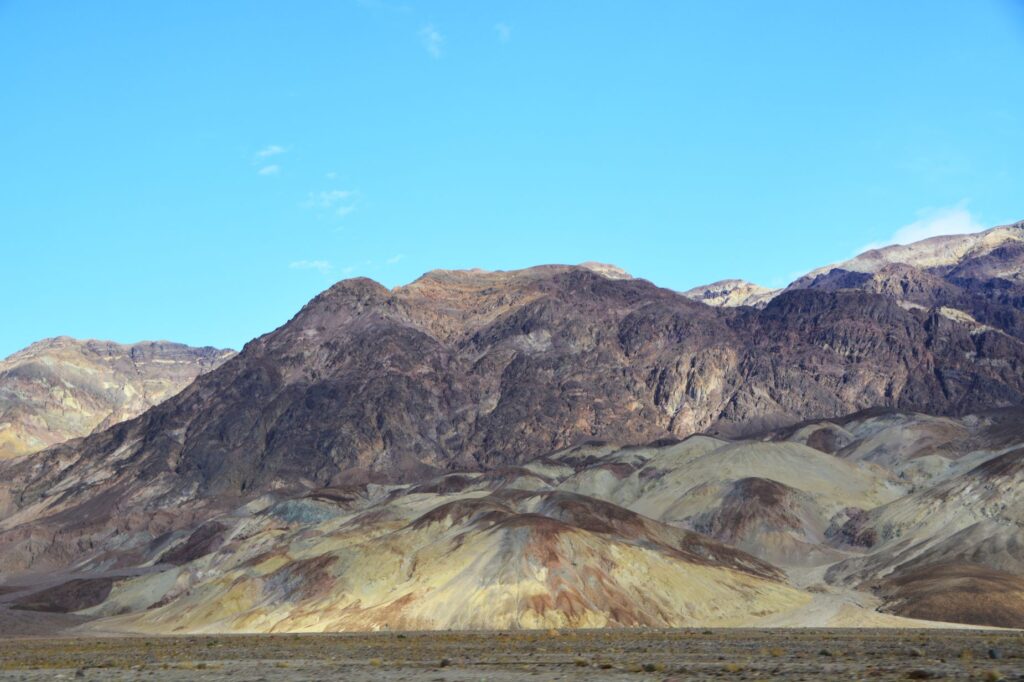
We drove on another 38 miles. We were racing against the clock to be at Mesquite Flat Sand Dunes before sunset. We arrived just in time. The shadows on the dunes were already beginning to deepen.
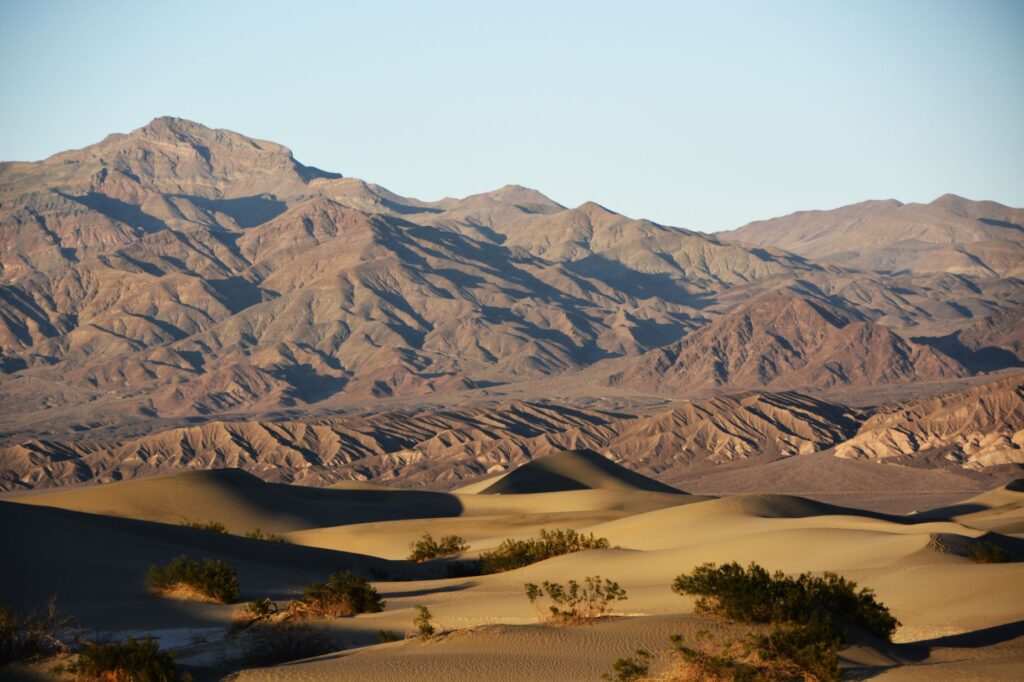
The dunes were massive. I felt like an ant climbing over them. Each one seemed bigger than the last.
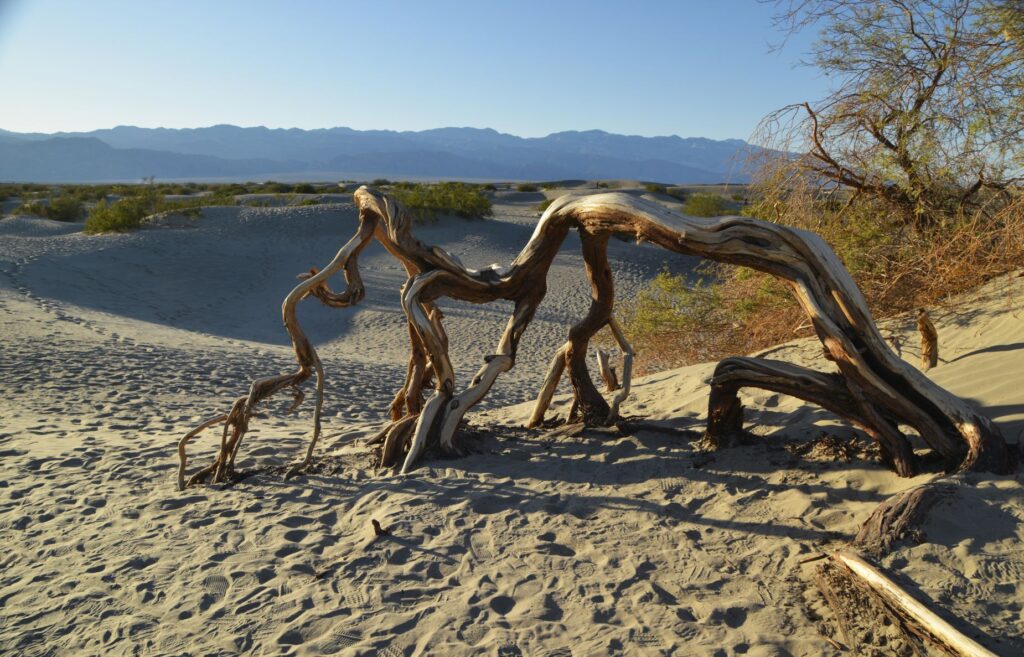
A twisted dead tree trunk was a reminder of the harshness of this environment. The highest recorded temperature in Death Valley was 134 degrees. I thought of the pioneers and native people who lived here before air conditioning and wondered how they survived. They likely fled to the surrounding mountains where temperatures were cooler.
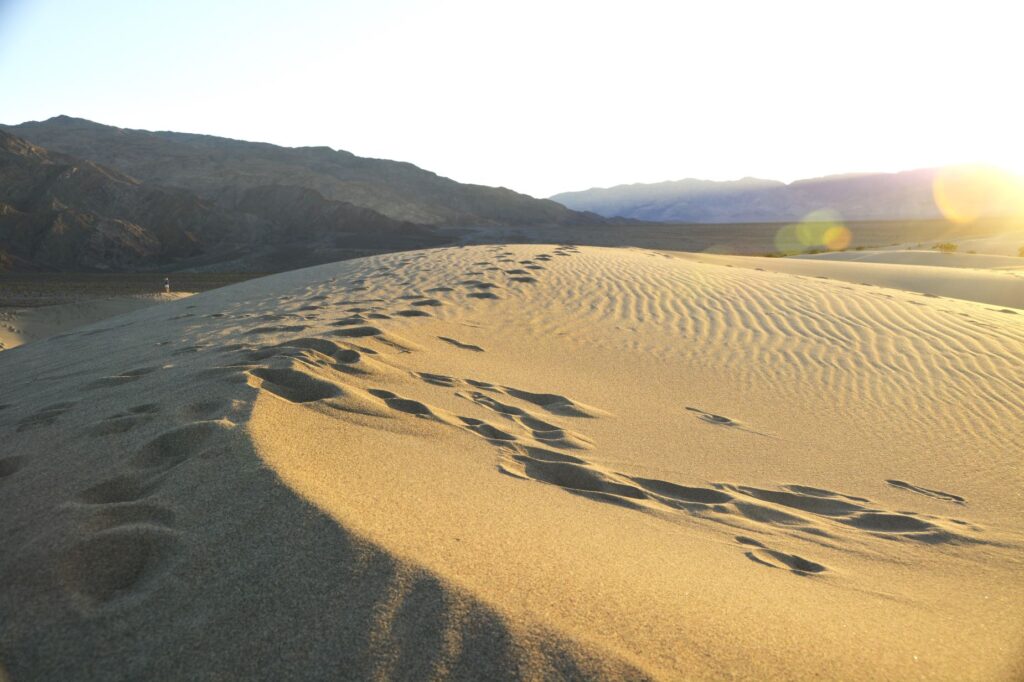
I followed the footprints of other tourists who had gone before me. I was sometimes confused about which way to go when down between the dunes.
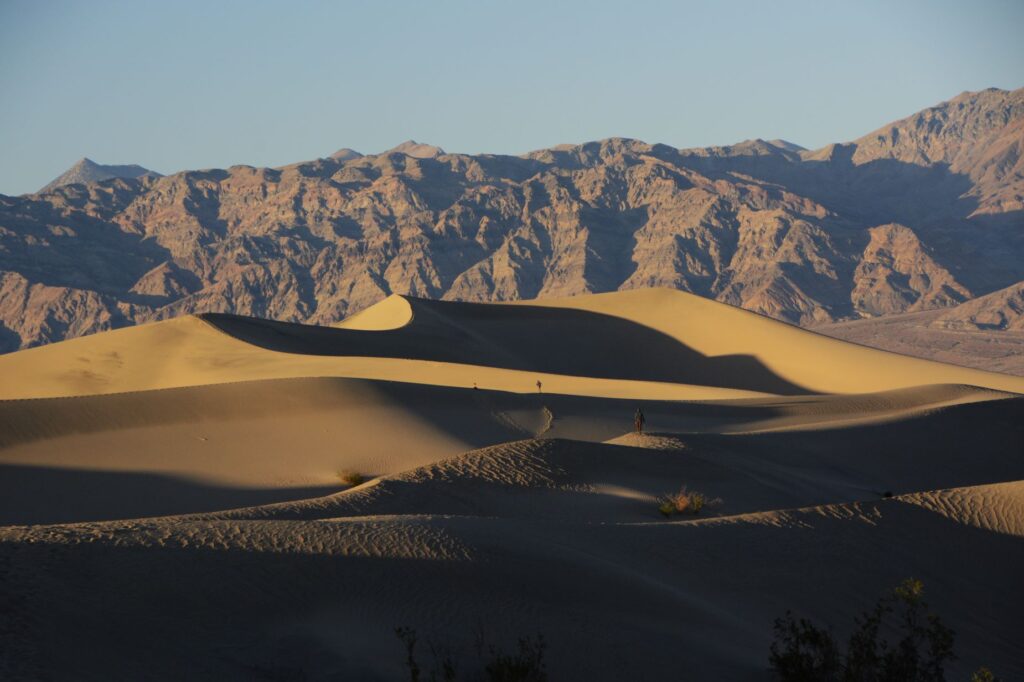
I climbed to the top of another dune and sat down as I watched as the last light of day illuminate the top of the mountain range. In the distance, I could see other people that were like tiny dots. I paused to catch my breath while enjoying the beauty of the stark contrast of the dark shadows against the sunlit sides of the dunes.

I thought of how these dunes would shift and change with time. The next time I visited they might be completely different in shape.
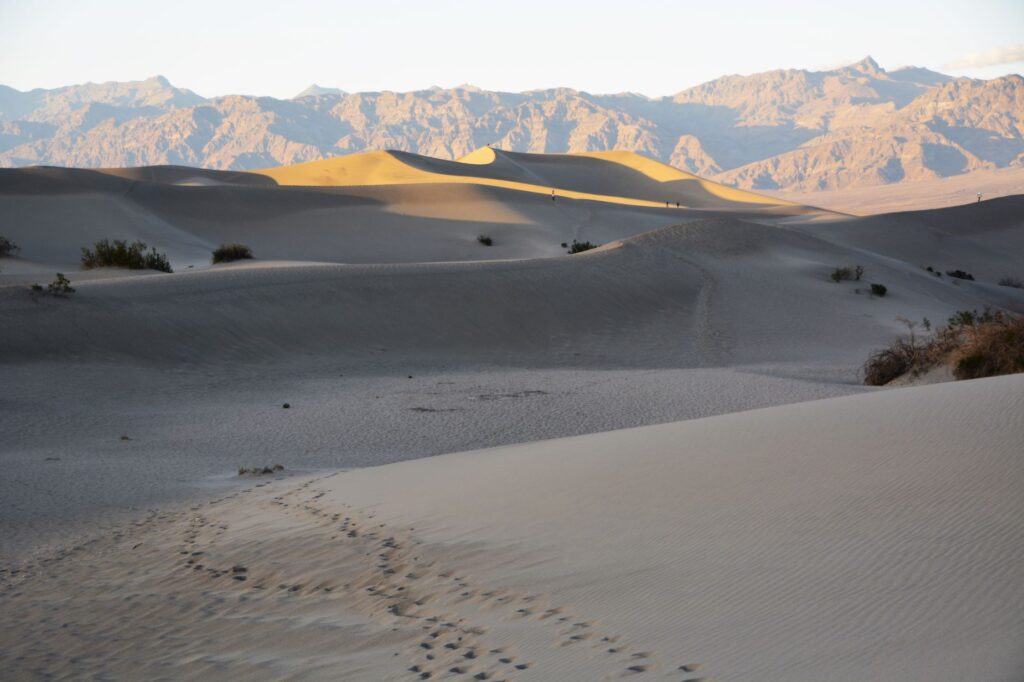
The shadows were quickly lengthening and the breeze grew cooler.
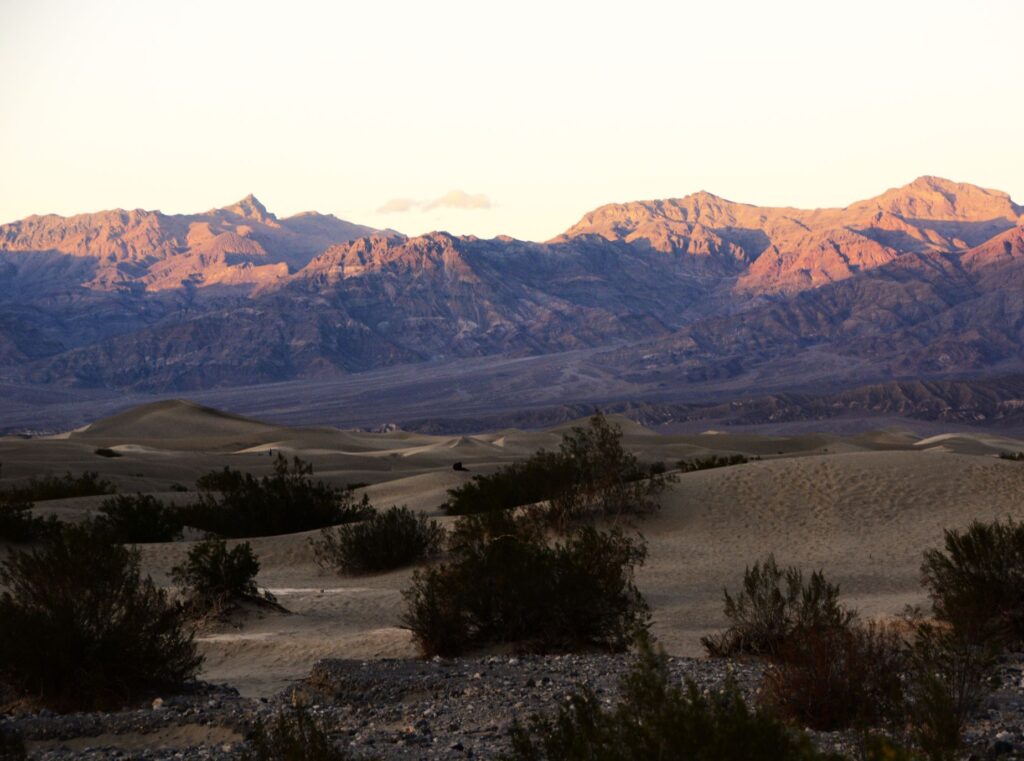
It was perfectly quiet. All I could hear was the sound of the wind as the last light of day faded on the distant mountains turning them a purplish pink. I followed my footprints back to the truck.
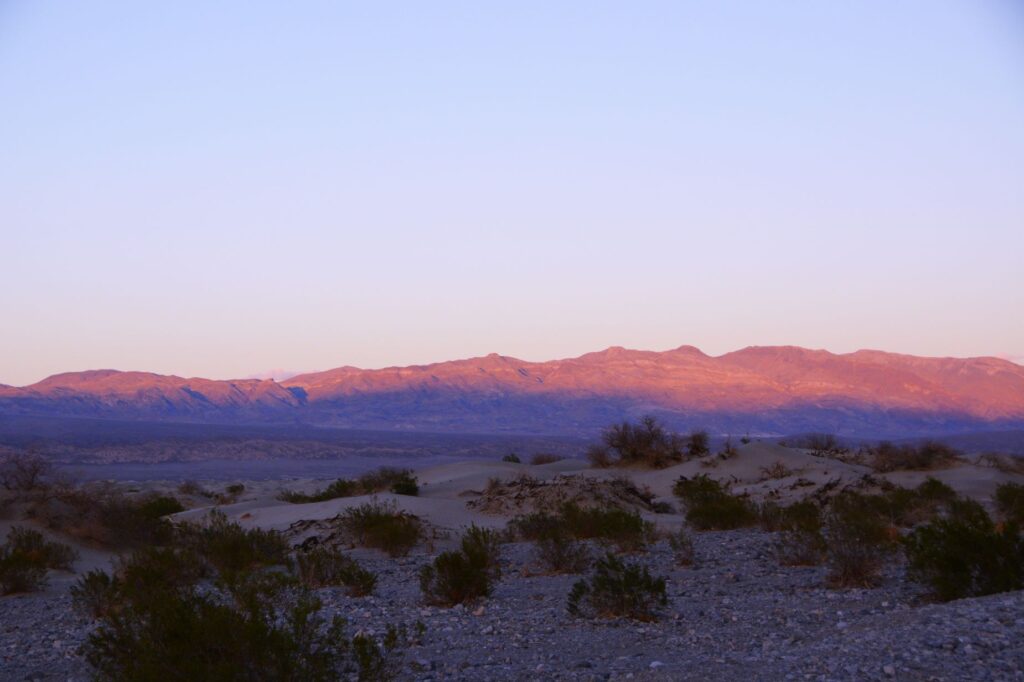
On our second trip into Death Valley National Park, we made our first stop at Dante’s View. This expansive view of the entire valley probably should have been our first stop of the trip. Looking down from over a mile above, one gets a great overview of the valley below, and a feeling for the great distances in this park.

Looking the other direction, it just keeps going on and on. This viewpoint was definitely worth the windy steep six mile drive. This view was unexpected. Previously, I thought Death Valley was flat all over.
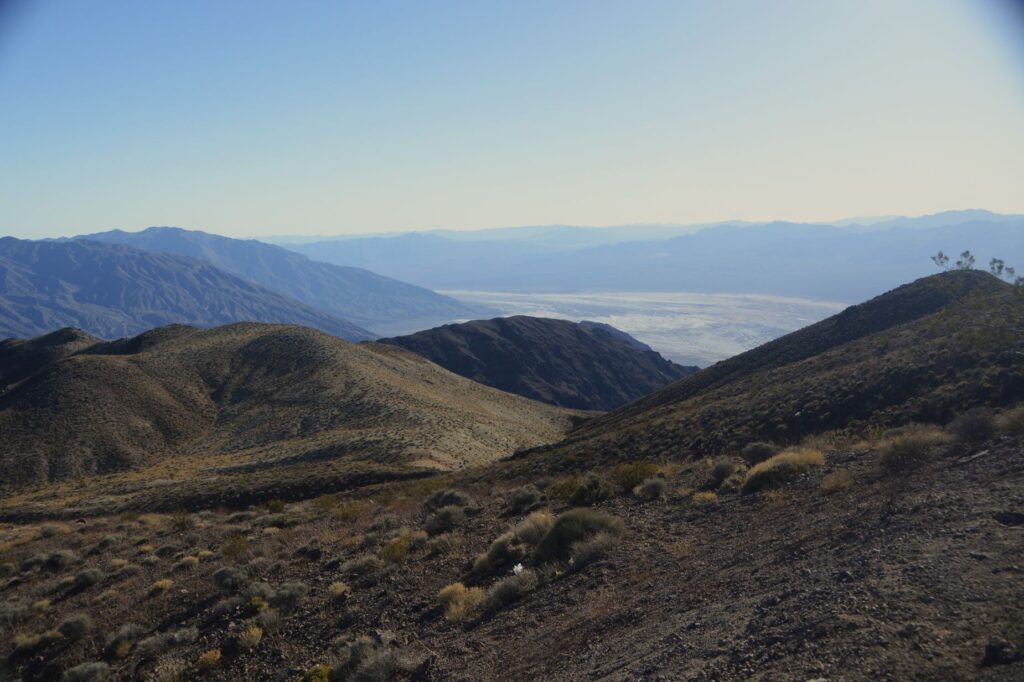
Zabriskie Point is another overlook on the way into the valley. We stopped here to hike up the quarter mile paved pathway to the overlook.
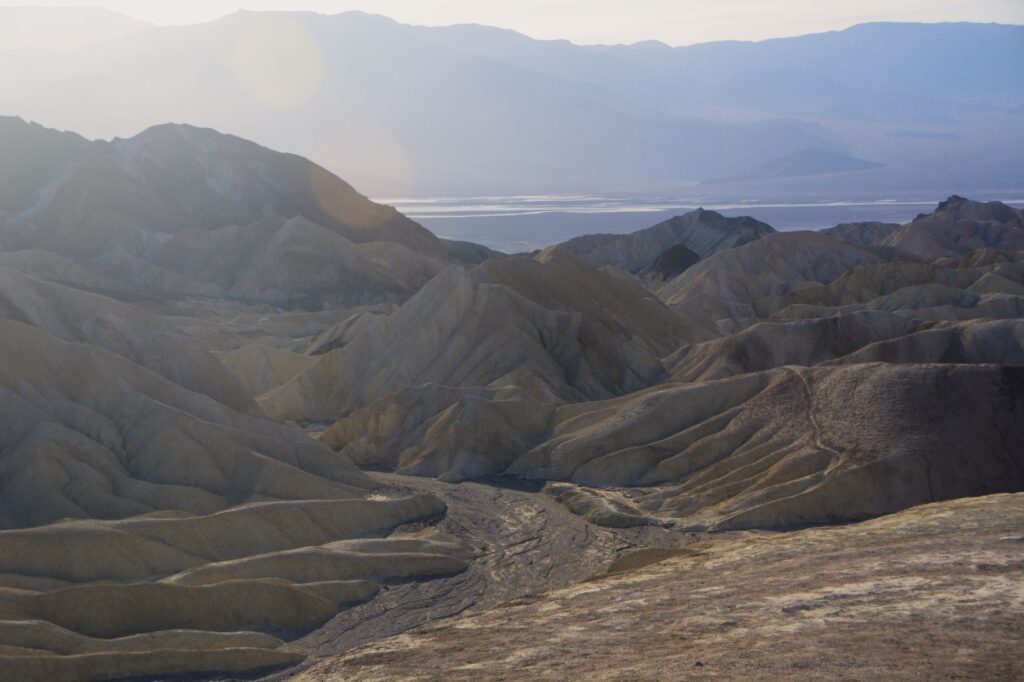
Since it was later in the day, the afternoon sun made interesting shadows on the golden colored badlands.
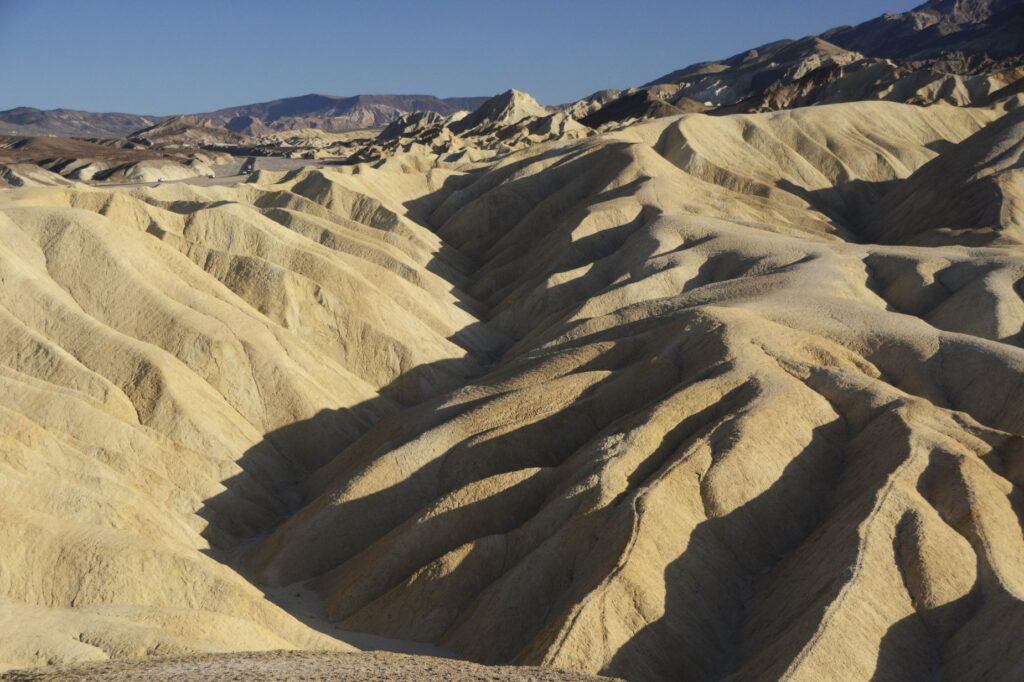
The beauty of Death Valley continued to surprise me. These different colored bands in the badlands at Zabriskie Point were so interesting.
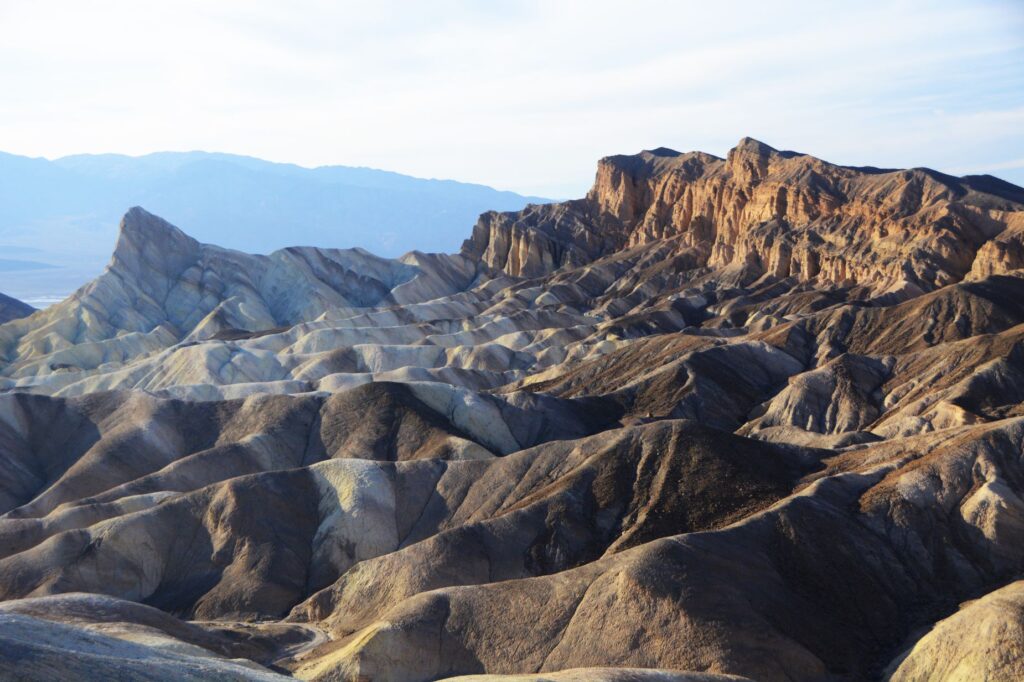
We had one more place to visit that day–The Harmony Borax Works. Here we saw the remains of a building for processing borax, one of the most profitable ores mined in the area. There was also an historic 20-mule team wagon.
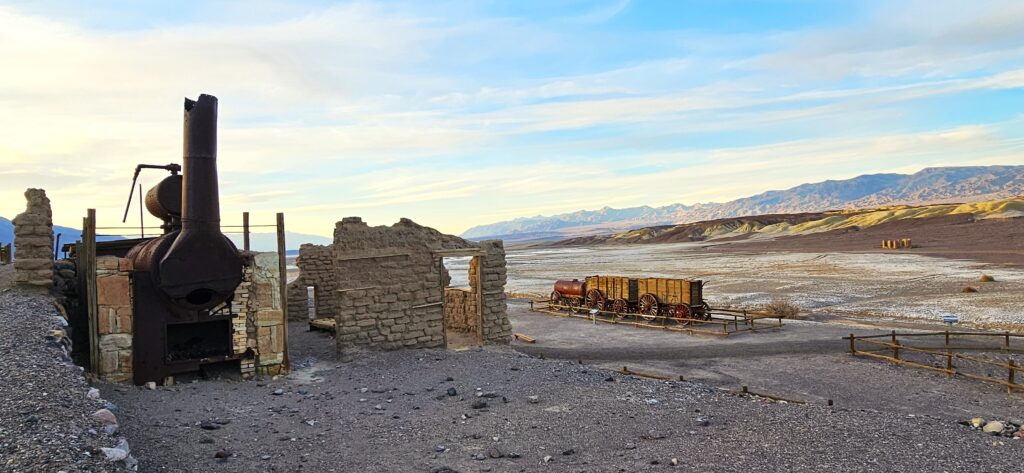
Chinese laborers from San Francisco, scraped borax off the salt flats and transported it by wagon to the refinery.
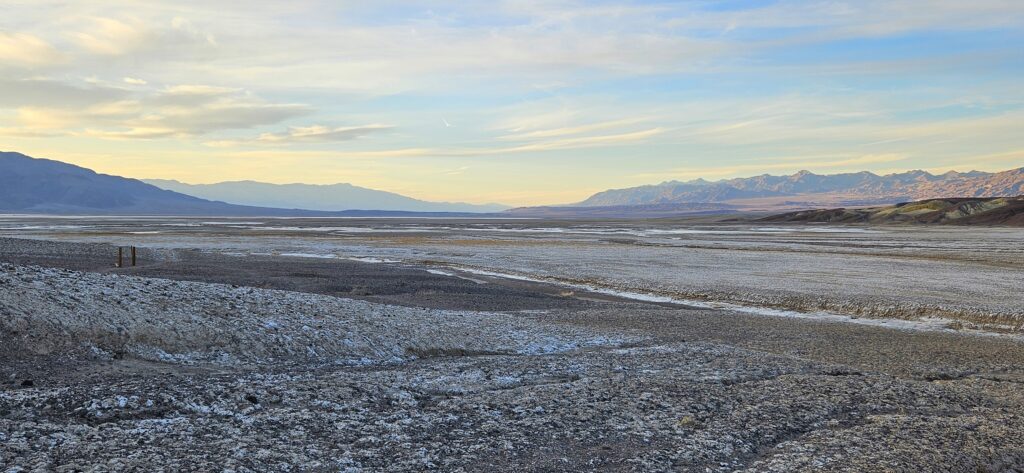
The borax could not be processed during the summer months due to the heat.
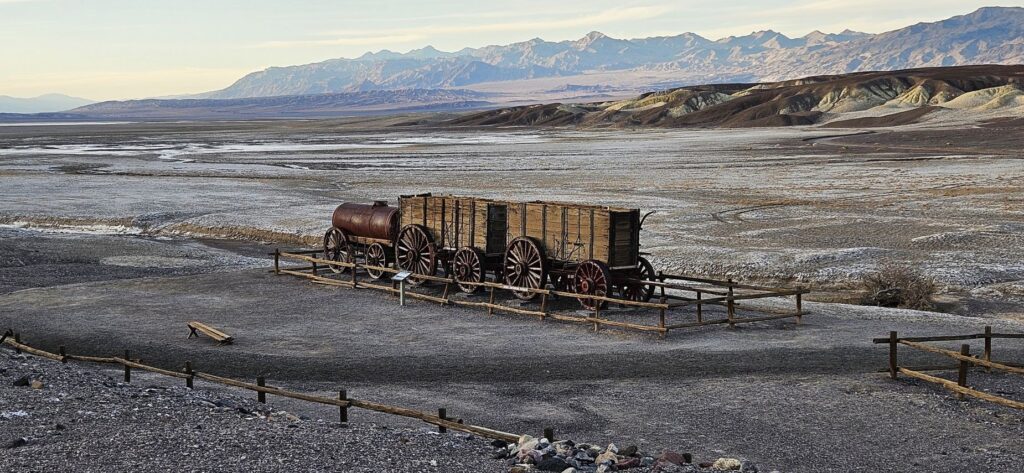
The nearest railroad was 165 miles away, so the ore was processed on site to make it easier to transport the borax by wagon.

As we ended our day, the moon rose over the mountains as the sun was setting. Once again, I was awestruck by the beauty.
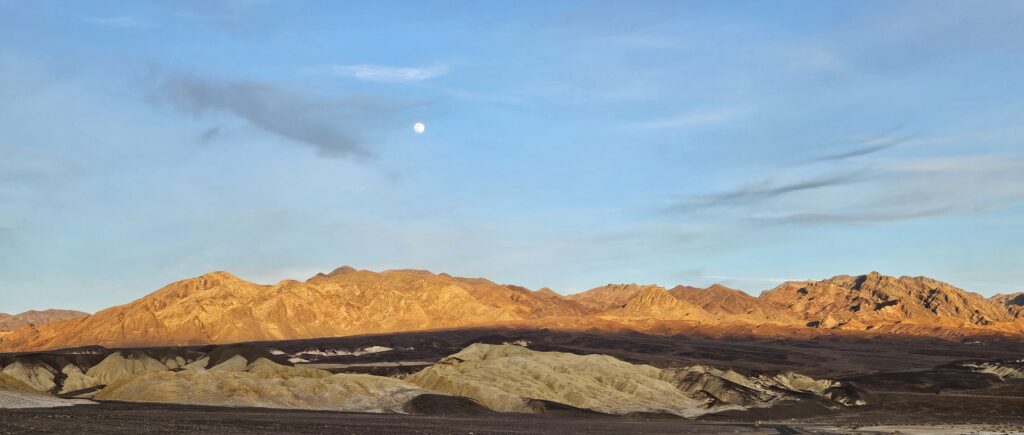
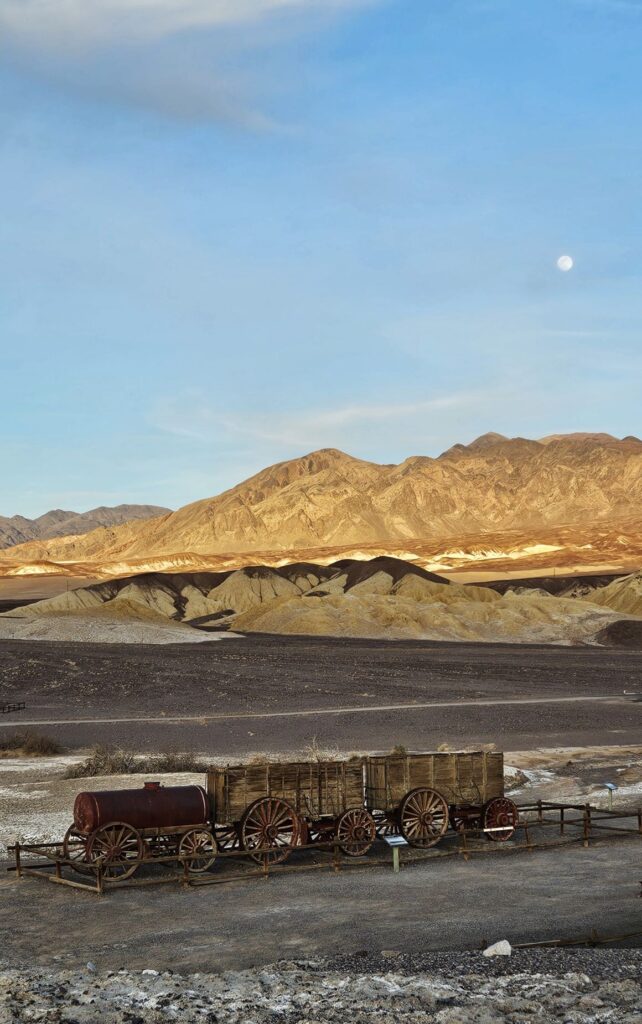
Death Valley is a study of contrasts. It is the lowest place in elevation in North America at 282 feet below sea level, while the highest peak, Mt. Whitney (14,505 feet) is just a few miles away. Death Valley has had the highest temperature recorded (134 degrees), but also recorded a temperature of 15 degrees in the winter of 1913. Death Valley has an average rainfall of 2.2 inches per year. But lately, 2.2 inches of rain fell in a single day in August 2023, resulting in flooding.
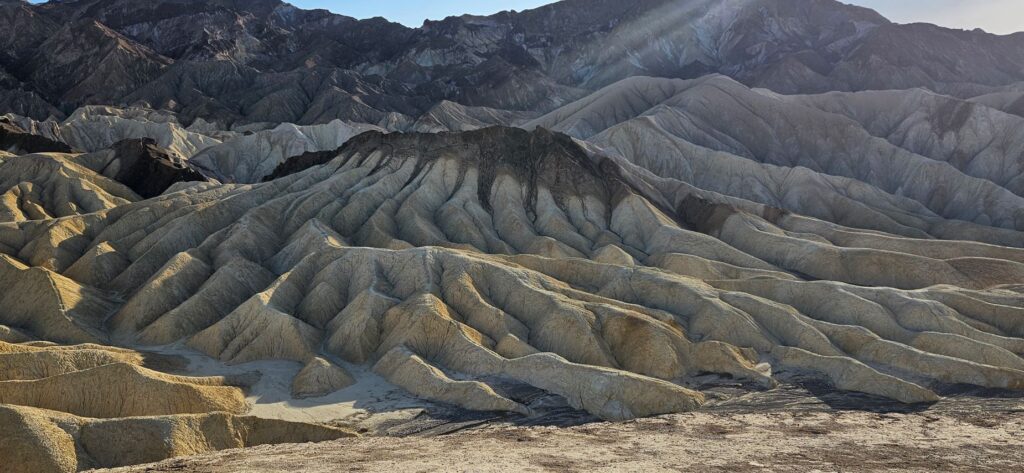
We visited in February of 2025 and, other than the first day, we experienced beautiful weather. I would love to revisit Death Valley in the future. There are still many places we did not get to see. It truly was a surprise to me that such a desolate place could hold so much beauty.
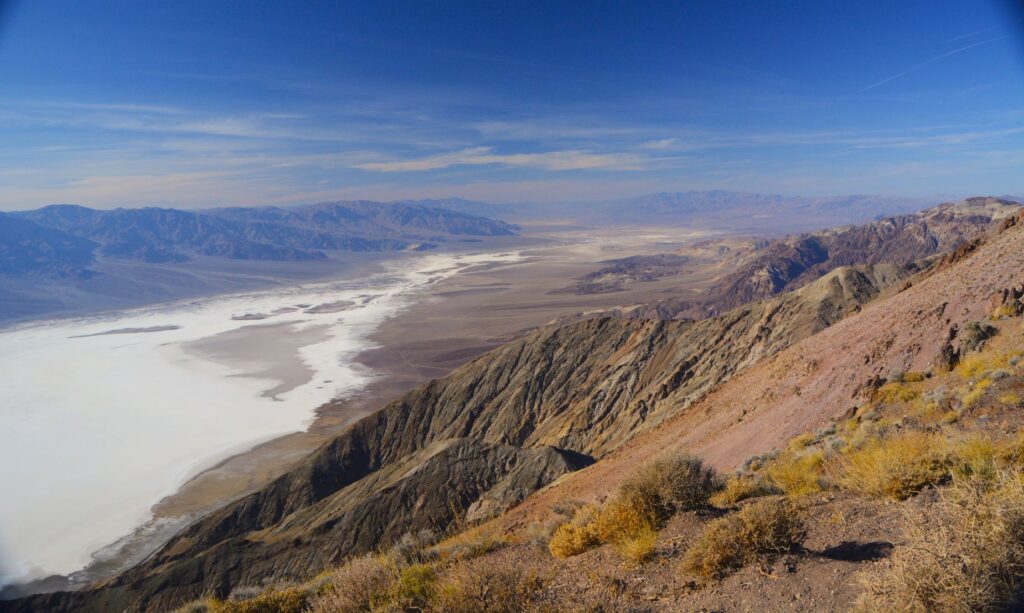
“Even when walking through the dark valley of death I will not be afraid, for you are close beside me, guarding, guiding all the way.” Psalm 23:4
